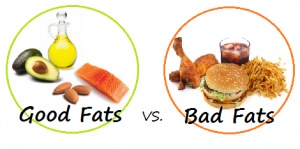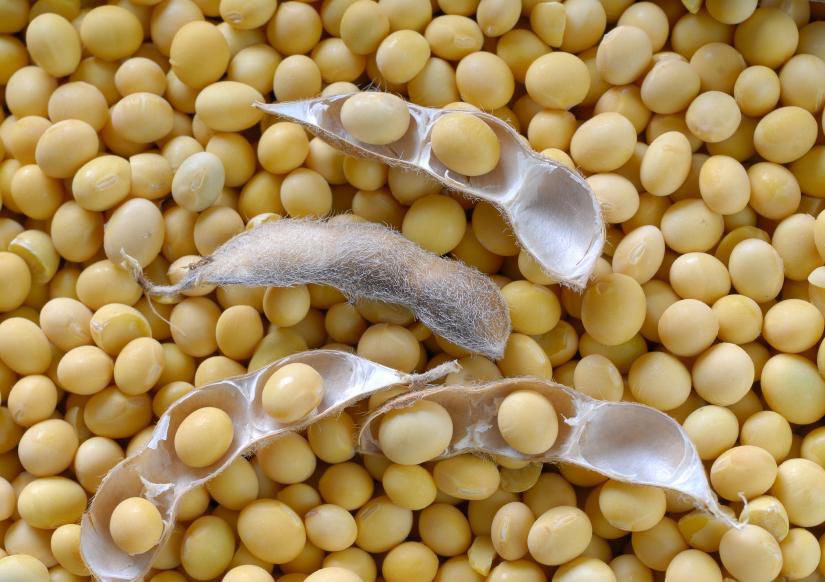 In an important dietary shift that has been a long time coming, following a three-year phase out period on June 18, 2018, artificial trans fats are now officially banned in the U.S. food supply. These altered vegetable oils, which have been partially hydrogenated to extend the shelf life of some processed foods, have long been linked to heart disease and other health problems.
In an important dietary shift that has been a long time coming, following a three-year phase out period on June 18, 2018, artificial trans fats are now officially banned in the U.S. food supply. These altered vegetable oils, which have been partially hydrogenated to extend the shelf life of some processed foods, have long been linked to heart disease and other health problems.
These partially-hydrogenated soybean oils were often used in commercially baked and fried foods, and their bad reputation and the pending ban has reduced soybean oil’s market share by more than 20%, reports DTN Progressive Farmer. That loss of market share translates into about 4 billion pounds of lost demand for soybeans per year.
Soybean farming in the U.S. is big business, and so several major players in soybean-based supply chains tasked their R and D departments with developing or finding soybean oils that could fill this gap. And so the effort began to develop strains of “high-oleic” beans — soybeans containing an increased proportion of oleic acid, a naturally occurring fatty acid, that renders soybean oil more stable so that, among other things, French fries and fish and chips can be cooked in deep fryer for a longer period of time before the cooking oil needs to be replaced.
But unfortunately, high-oleic soybean oil is more stable because it has reduced proportions of linoleic acid (the main omega-6 in food) and alpha-linolenic acid (the main omega-3) — two fatty acids that easily become rancid and reduce the shelf life of commercially baked and fried foods.
Oleic acid is much more resistant to rancidity, so high-oleic soybean oil can be used by food processors without the partial hydrogenation, and hence without the creation of trans fat in soybean oil.

Oleic acid is an omega-9, monounsaturated fatty acid with the common abbreviation 18:1 cis-9. Fatty acids come in hundreds of forms, some are unequivocally healthy (even some saturated fats) and indeed essential (short and long-chain PUFAs), others are unhealthy, and science is yet to figure out how several dozen impact human health.
For an explanation of the differences in the structure of fatty acids, e.g. how an omega-3 fatty acid differs from an omega-6 or omega-9, see our “Primer on the Fatty Acids in Milk”.
Some of the new high-oleic soybeans, like Monsanto’s Vistive Gold and the Plenish soybeans developed by Pioneer, are produced through genetic modification. There are also non-GM varieties being developed by several smaller seed companies.
While these beans have been on the market for several years, demand has grown slowly. However, that is starting to change. The United Soybean Board estimates that around 650,000 acres were planted this year to high-oleic soybeans. The entire U.S. soybean crop is over 80 million acres.
With the trans fat ban now in place and international export approval just secured, demand for high-oleic soybeans is expected to rise. Corteva (the new name for Dow AgroSciences+DuPont’s ag divisions), now owns Pioneer’s Plenish line of high-oleic soybeans, and predicts that the 350,000 acres planted in 2018 to Plenish soybeans will double in 2019.

The industry has set an ambitious goal of 16 million acres by 2023, or about 18% of the total U.S. soybean crop. We have reported extensively on Hygeia about the declining quality of fat in the American diet, and agree with the emerging, biomedical consensus that it is equally, or even more important for people to improve the quality of fat in their diets, than it is to reduce the quantity.
So, the quest for high-oleic soybeans helps solve one problem, but is likely to create or worsen others. Are high-oleic soybeans the best option to get trans fat out of the food supply? Are there other cooking oils that are inherently healthier (e.g. canola oil) and don’t require partial hydrogenation?
What about cost to farmers, who are now paying a “healthy” premium for GM, high-oleic soybean seed, and cost to food companies and fast-food restaurants eager to have a more stable soybean oil option? Would it be more cost-effective to alter the fatty acid composition of soybeans via conventional breeding, so that farmers can save seed and plant it the next year (a practice prohibited with all GM soybean varieties)?
Choices, choices, choices, all of which have consequences.
Look for further analysis coming soon as we take a closer look at the different options for producing high-oleic soybeans, other cooking oils that do not contain industrial trans fats, and tackle impacts on consumer choice, nutrition, farmers, the food industry, restaurants, and the future of food.
Source:
Emily Unglesbee, “Goodbye Trans Fats, Hello High Oleic Soybeans,” DTN Progressive Farmer, June 18, 2018.

